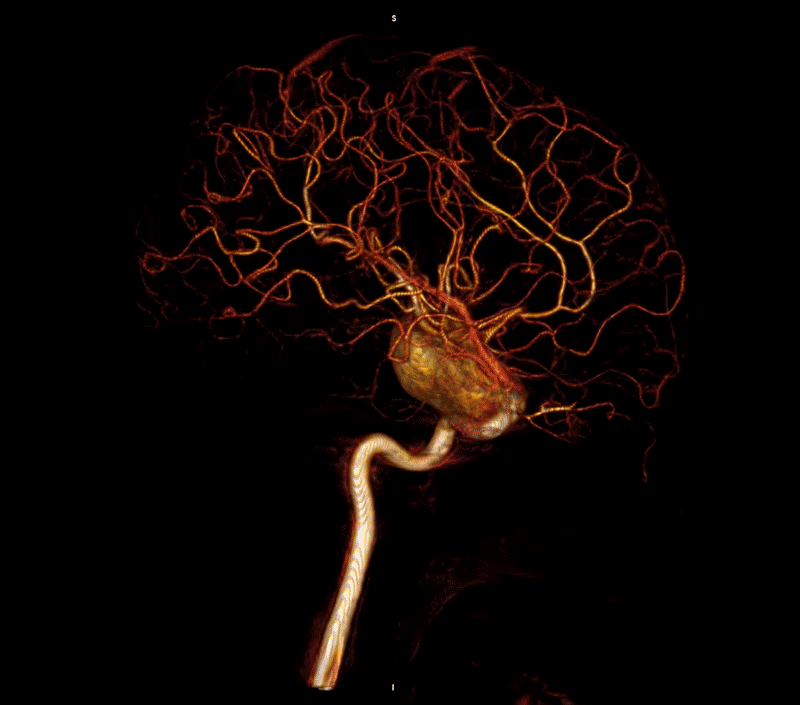
Parc Taulí intervenes in a giant pediatric aneurysm using a minimally invasive endovascular technique
- Posted In:
- News
- No Comments
- The patient had a good and very quick recovery thanks to the minimally invasive intervention of the team the Interventional Vascular Radiology Unit
Parc Taulí has performed the repair of a giant aneurysm in a pediatric patient using the telescopic endovascular technique with two flow diverting stents. This minimally invasive intervention had already been done in adult patients; but it is the first time it is done with a pediatric patient in Catalonia.
This intervention was performed on a 15-year-old patient who came to Parc Taulí for an occasional headache. During the scan it was observed that he had a giant aneurysm of 4.5 cm in the internal carotid artery. After the multidisciplinary assessment with the specialists of the department of pediatric and adult neurosurgery and neuropediatrics, it was decided to perform a minimally invasive intervention using the telescopic technique, with two flow diverter stents, to avoid having to go through a surgical process.
During the intervention, which lasted one hour and thirty minutes, a selective catheterization was performed to reconstruct the arterial wall. To be able to do this process, microcatheters were inserted through the artery to be able to join the two healthy parts of the blood vessel and to be able to deploy the stents, creating a bridge. As the aneurysm was huge and very long, the telescopic technique was used.
A multidisciplinary team of professionals from Parc Taulí participated in the intervention: the director of the Image Diagnostic Service, Joan Perendreu; specialist in Neurointerventionism of the Interventional Vascular Radiology Unit, Nicolás Romero; the interventional neuroradiology specialist of the Interventional Vascular Radiology Unit, Roberto Eduardo Correa. The head of Neurointerventionism at the Vall d'Hebron hospital, Alejandro Tomasello, also attended.

"After holding several meetings with the specialists at Parc Taulí, we performed this technique because the aneurysm was very long and currently there is no material for this type of aneurysm in the blood vessels. In addition, it is less invasive and patients' recovery is much faster", explains Dr. Rosemary
The endovascular intervention was successful and the patient recovered very quickly. Given that this was the first time an intervention with this procedure was performed on a pediatric patient, the professionals decided to carry out the control and follow-up from the Intensive Care Unit for the next 72 hours. The following days, the patient's evolution was favorable and diagnostic tests showed neurological improvement, post-intervention.
With the implementation of this pioneering intervention, Parc Taulí continues to bet on positioning the hospital as one of the centers of reference in Catalonia; as well as for the specialization of its professionals and the expansion of its portfolio of services to continue offering quality care to citizens.
Endovascular intervention
Endovascular repair is a less invasive intervention for the treatment of aneurysms. In most cases a coil is used and a stent or mesh tubes are placed to repair the aneurysm.
As explained by Dr. Belt, "with the flow diverting stents we prevent the patient from having to go through surgery. Only with a puncture in the femoral region, we start the endovascular treatment for the resolution of the aneurysm. It is a very effective alternative to surgery".



Leave a Reply